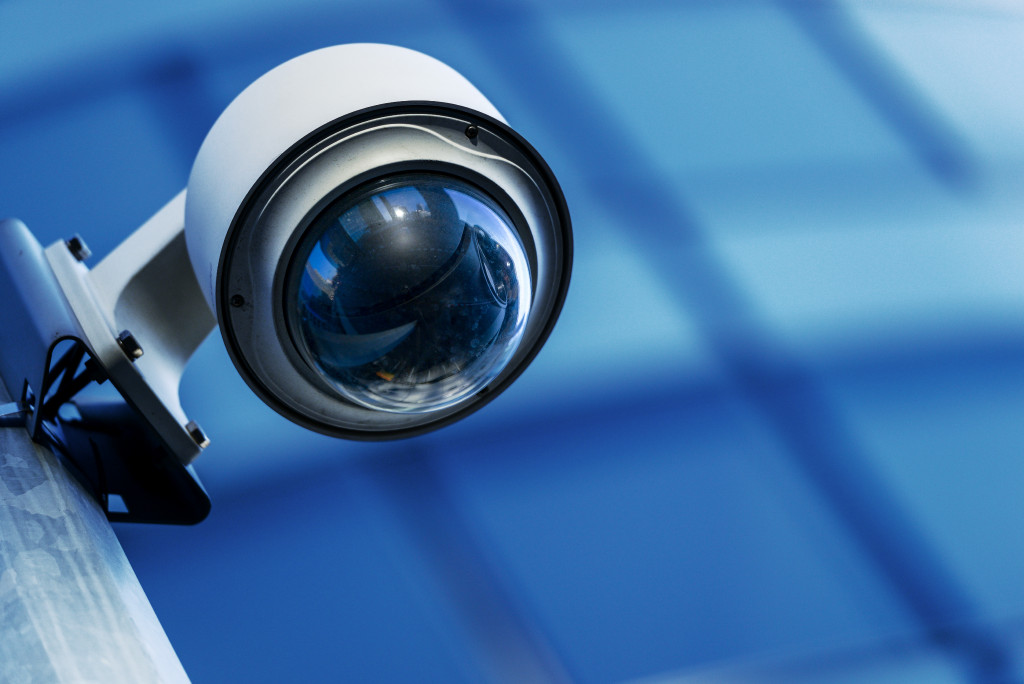Security cameras have become a standard part of many workplaces, providing an extra layer of security and protection for employees and visitors. Many surveillance cameras are available, from basic entry-level models to high-end options with advanced features. It’s important for security officers to understand the different types of cameras and their features to decide what will work best as part of their building site security protocols.
Analog Cameras
Analog cameras are the most basic type of surveillance camera. They transmit video signals over cables, typically using coaxial or twisted pair wires. An analog camera is relatively easy to install and maintain, but it has limited capabilities compared to other cameras. The resolution is lower than digital solutions, and they don’t have the same range of features, such as motion detection or night vision.
With these limitations, analog CCTV cameras are an affordable choice for surveillance systems, significantly cheaper than other varieties. The higher cost of higher-end digital camera systems often comes with bells and whistles that may only be necessary for some applications. Since added features equal add-on costs for digital cameras, analog CCTV cameras provide a logical choice for any company or individual looking to install a surveillance system that can fit their limited financial means yet provide adequate security coverage.
For those operating on a tight budget, analog is the only viable option available. In online retailers like Amazon, analog dome CCTV cameras can go for as low as $40.
IP Cameras
IP (Internet Protocol) surveillance systems are famous for building site security. These cameras are becoming increasingly popular due to their advanced features, such as high-definition video resolution, wide-angle lenses, and remote access. IP cameras offer much higher resolution than analog systems and more advanced features such as motion detection, night vision, and two-way audio capabilities. They also allow for remote viewing and playback of recorded footage from any location with internet access.
IP cameras are capable of providing real-time, remote monitoring and surveillance of a variety of locations. However, they have several limitations that officers should consider before deciding whether to install them in a particular situation. For instance, IP camera images may be distorted or blackened out due to network interruptions caused by signal interference, slow data speeds, or inadequate bandwidths. Case in point, an installation running at 1080p will eat away the network bandwidth at about 5 Mbps. This rate is significant, notably if the installation shares the bandwidth with other connected devices in the network. The best solution is to provide a closed-circuit installation for all IP cameras in the workplace, complete with its stand-alone network.
Meanwhile, some high-resolution models may require more signal processing power than what exists in older devices and hence not be compatible with them. Specific cameras may also need particular network configurations and settings to ensure proper functioning.

Wireless Cameras
Wireless surveillance cameras are becoming increasingly popular due to their convenience and ease of installation. These cameras use radio frequencies instead of cables or wires to transmit data over short distances; they can be placed anywhere without running lines through walls or ceilings. Wireless cameras are ideal for outdoor environments where running cables is complicated due to weather conditions or terrain. Additionally, since they could be placed almost anywhere, these cameras also serve as deterrents against break-ins—intruders are likely to spot cameras from a distance and may change their minds once they see the robust security measures in place.
However, it would be best if you considered some limitations before investing in such a system. The most glaring burden is reduced image quality compared to wired CCTV systems. This low quality is due to the lower data rate of wireless connections for streaming audio and video, thus compromising the clarity of recordings. Another burden is when the wireless network manages too many cameras in different locations connected to the network via several hubs.
Additionally, because wireless signals need to travel through walls and obstacles, reception can become distorted when trying to capture footage from faraway locations or those with heavy obstructions in the way. Lastly, there is the risk of interference from other networks or solid physical barriers, which can be challenging to identify since no direct line is established between the camera and receiver as you would with traditional, hardwired setups.
The Bottom Line
Security officers must consider all factors when selecting the best camera system for their workplace environment. Each type has its benefits and drawbacks; it’s up to each security officer to decide which type will best meet their needs and provide the highest level of protection for employees and visitors alike.


